It’s really easy to get frustrated with finding quality client projects.
Either you’re dealing with haphazard referrals from past clients…
Or you’re waiting for that actually legitimate lead to fill out your site’s project request form…
Or you’re frustrated with competing with the world on platforms like Upwork or haggling with penny-pinchers on Craigslist…
I made a case for building an audience in this post.
You probably understand why it makes sense to focus on building an audience. After all, exposure = an increased Luck Surface Area, which directly translates into more clients and more referrals.
But where the heck do you start?
The good news is that there’s a ton of information out there penned by a lot of really smart people. Content marketing, list building, marketing automation… there’s no better time than ever to sidestep your way to success without needing to waste too much time on trial and error.
But the bad news? Almost all of that content is for people who want to build products, created by people who build products.
I’m talking about selling ebooks, courses, plugins, software-as-a-service, membership sites, and other products that are almost always low-touch (meaning: people read a sales page, enter in their credit card details, and buy) and relatively low-cost, at least when compared to hiring a consultant.
So what should you, as a freelancer or agency owner, focus on first?
Well, I’ve got some more good news for you: I’ve got you covered in this guide 🙂
The biggest lever you have when it comes to launching a product successfully is the size of your audience.
This is good, because you can start building an audience long before you even have an idea for a product 👍🏻
— Adam Wathan (@adamwathan) May 14, 2018
Meet Janelle Allen of Zen Courses
Before I get into what you should do to start your audience from scratch, I want to give you an idea of what’s possible.

My friend and consultant Janelle Allen of Zen Courses first came onto my radar because of her blog. I think an article of hers was shared on Twitter, and I have no idea what article that was – that doesn’t matter. I think it was about how to interview your customers to come up with adjustments you could make to your online course.
What does matter is that I liked what I read enough to give Janelle my email address:
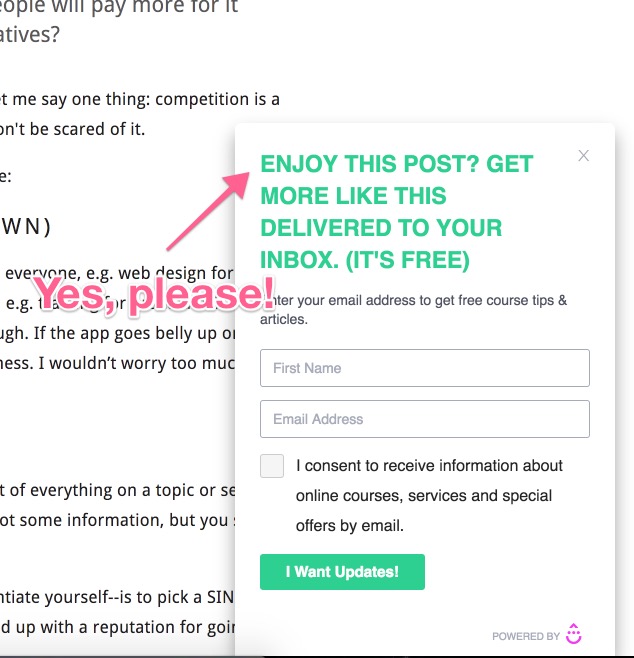
Keep in mind I wasn’t looking for Janelle or looking for content about courses. I was just killing time on Twitter.
Whenever she’d publish a new blog post or podcast episode, I’d usually get an email – and most of the time, I’d read it.
I didn’t read and listen to every new piece of content she published, but before long I started to associate Janelle Allen with “knows a lot about courses.”
This is important!
Why? Because guess what happened when I was struggling to get over a hurdle I had with one of my courses.
Instead of Googling “online course coaches” or asking around… guess what I did?
I remembered Janelle, and went back to her website and found exactly what I was looking for:
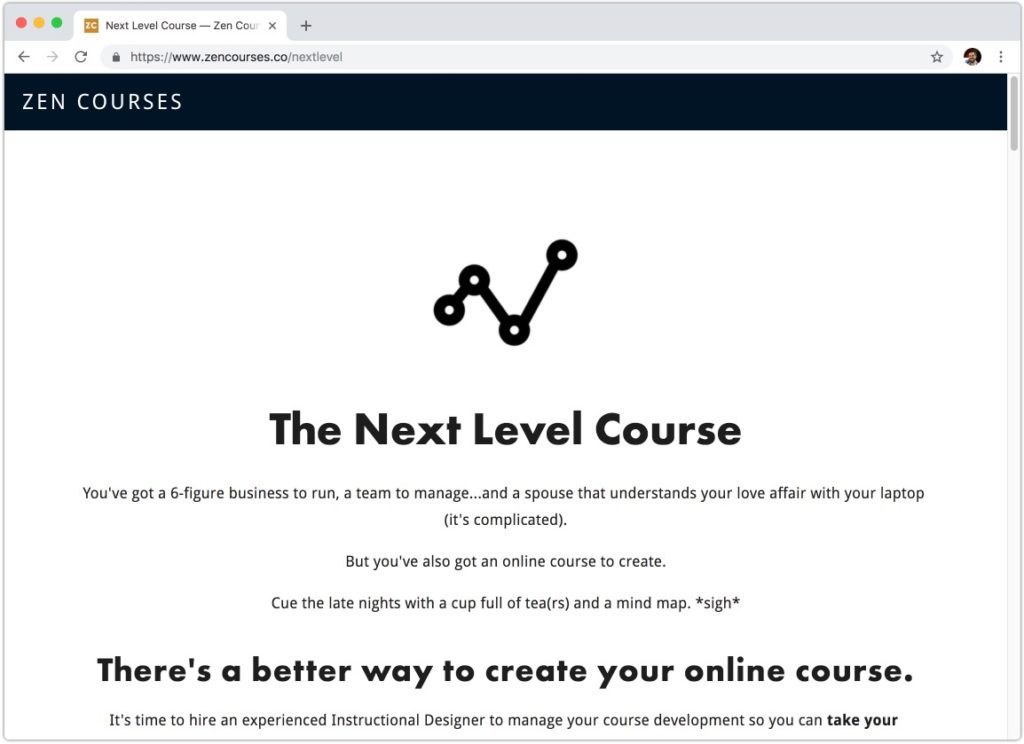
And who do you think I recommend whenever somebody asks for 1-on-1 help in designing and launching an online course? You guessed it.
Here’s the funnel I went through:
- Somebody (I don’t know who) shared an article of Janelle’s
- I read the article and liked it
- I gave her my email address because I liked what she was writing
- I then casually listened to her podcast and read future stuff she wrote
- Eventually, I decided I needed some help with a course, and I reached out to her
Janelle expanded her Luck Surface Area by substantially increasing the likelihood that someone like me ended up working with someone like her.
Could she had come up with a Google search for “online course coach”? Possibly.
But she wrote and recorded content that slowwwwlyyy convinced me to step-up my course game. There wasn’t ever a lightbulb moment where I read an article and then immediately decided to hire her. Instead, she slowly aligned my thinking about courses with her thinking, and helped me identify that I was doing a lot of things wrong. Then I was actually ready to be a client of hers.
A quick start guide to building an audience – and possibly getting some clients in the process!
I’m going to make a few assumptions:
- You have a non-existent (or extremely small) mailing list
- You don’t have content that actively works for you (maybe you had started a blog, but you abandoned it or it really never made an impact)
- You haven’t seen a direct correlation between creating content and getting paying clients
In my course, The Blueprint, I focus on a strategy that I call The Trojan Horse Technique.
And from the perspective of someone who wants an audience, and wants to build authority and influence, this is going to be the easiest way for you to rapidly build influence and potentially get high-value clients simultaneously.
So here’s what the Trojan Horse technique is in a nutshell (and there’s no sacking of cities required #classicsgeek):
- You compile a list of companies that you’d love to work with
- Then you do a bit of research and find out something interesting about each (their origin story, a product or service they recently released, something they’ve done or maybe shared on social media)
- You email someone at that company and ask if you can interview them for your podcast, or write an article about them
- You use this interview to help increase your authority and your reach via new content (details below)
- You now have a relationship with this company – and they’re indebted to you because you’ve promoted them!
- Through this relationship, you have a foot in the door for pitching them on working together
Simply put, it’s an outreach strategy focused on give, then ask.
Rather than cold emailing a stranger with a message that centers on “me, me, me!” and “buy, buy, buy!”…
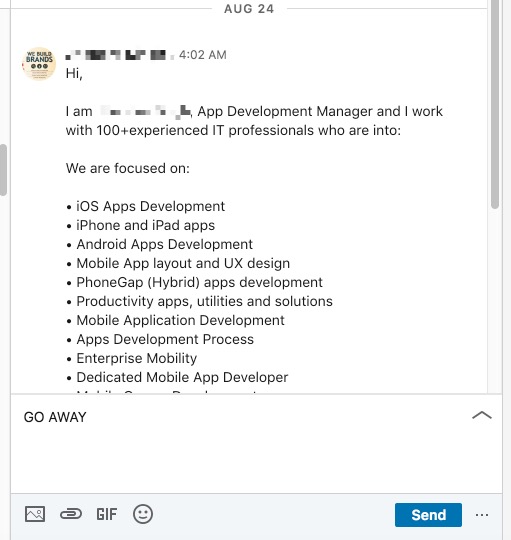
You’re instead saying:
“Hey! I’d love to promote you to my growing audience. Could you spare a bit of time so I can capture your story and share it with the world?”
Give, then ask.
What I love about this technique is that:
- It creates a non-threatening relationship with companies that you’d love to get to know or work with
- The byproduct of helping a company is a piece of evergreen content that serves to create more opportunities for people to come across you and your work
- The interviews you do can (and should) be sent to the growing audience of people who like the stories and strategies you’re sharing, thus further establishing yourself as an authority in your space
- More often than not, the companies you interview are happy to share with their network
- Has built-in referral potential: “Who could I interview next? Could you introduce them to me?”
Rather than sitting in a dark room and trying to come up with content ideas, start by curating the stories and strategies of others.
Expertise and authority is something that’s up to you to create for yourself.
Let’s look at Janelle again. Here’s a screenshot of her podcast archives page:
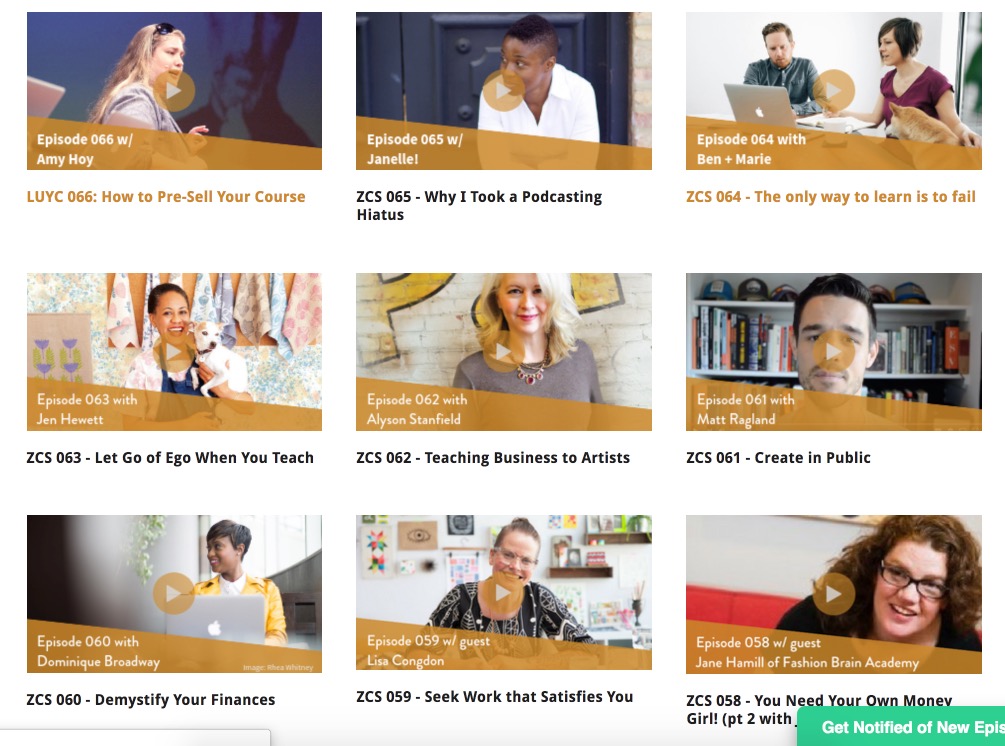
Every interview is with someone who sells courses or is influential in the online course space.
And even I make an appearance!
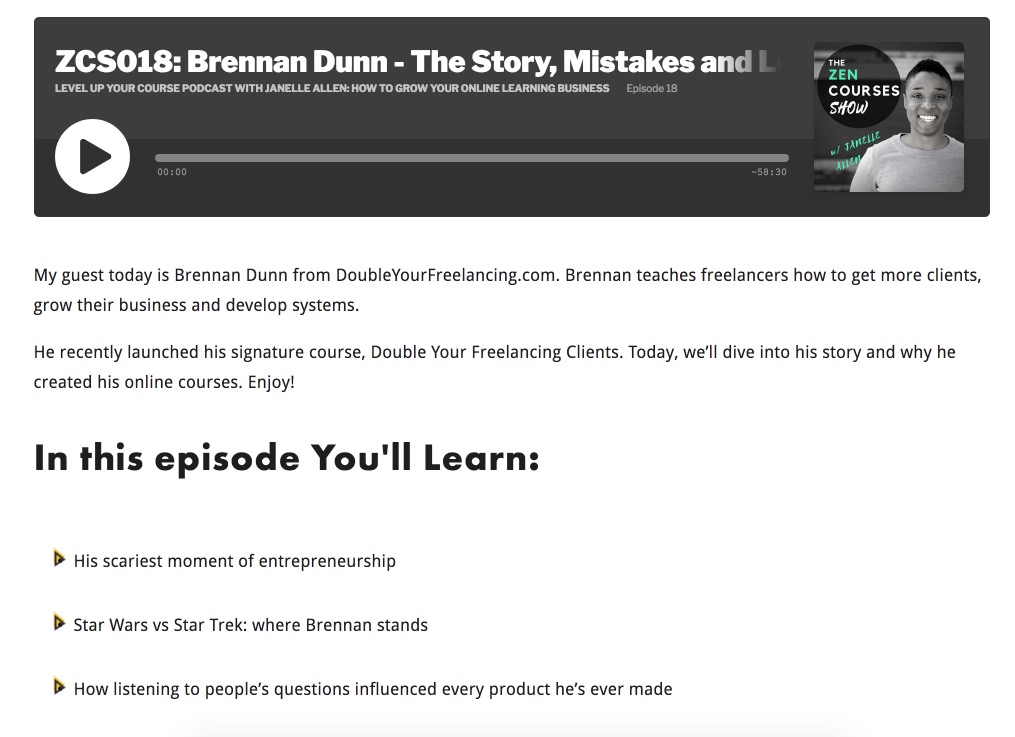
Do you see how Janelle is entrenching herself as the expert in the online course world? And in the process, building relationships with the movers and shakers in that space?
Kurt Elster runs a Shopify agency called Ethercycle.
He’s spoken at numerous Shopify events and conferences, makes an appearance in the book Shopify wrote and released, and his agency just won’t stop growing.
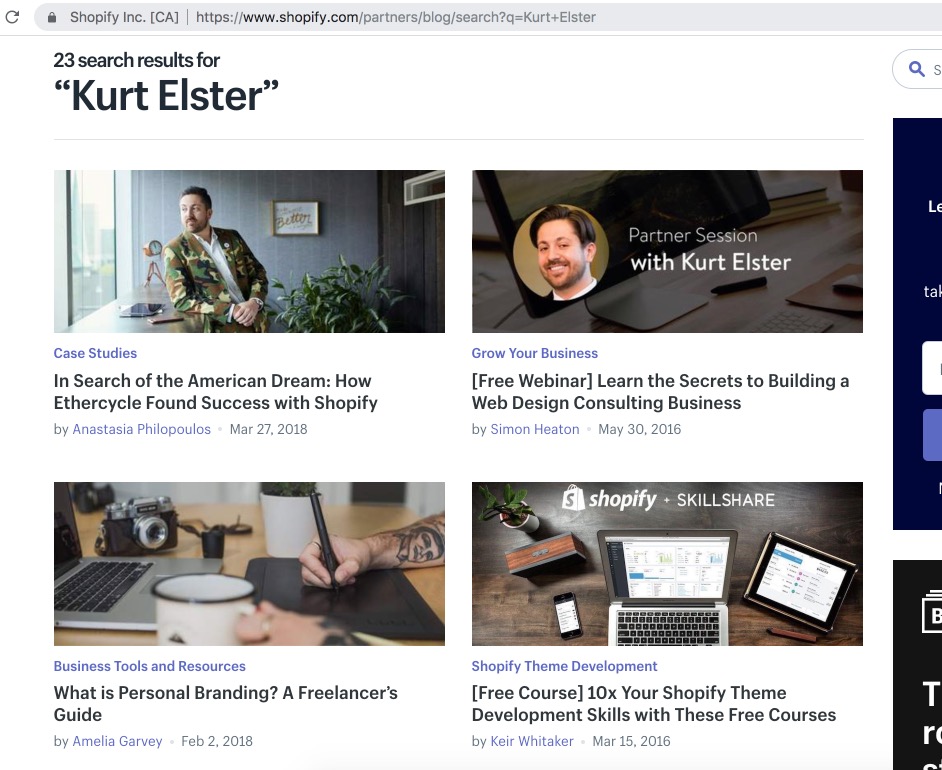
Why?
Kurt started the Unofficial Shopify Podcast in 2014. Each episode is a case study with either a client of his, somebody who’s doing really well in ecommerce, or with a specialist (like a sales copywriter.)
The connections Kurt’s made and the listenership of his podcast have grown proportionally with the success of his agency.
So rather than waiting for referrals… or waiting for someone to find Ethercycle… or crawling through the muck that is Internet freelance job boards… Kurt & Co have owned their success by becoming a key player in the Shopify space.
–
This only scratches the surface of what’s possible.
We haven’t talked about what to do when people join your audience, ways to leverage other people’s audiences to help grow faster, or how to develop service offerings that you systematically move leads to. That’s all covered in The Blueprint.
But, hopefully, this gives you an idea of what’s possible – and how to get started.
No higher power anointed Janelle or Kurt as experts or authorities in their respective worlds. They made it happen.
And they did it by using the Trojan Horse technique to build relationships with the right people and companies, create evergreen value for their market and those companies, and used that exposure and those relationships to help propel their businesses forward.
Also, if you decide to use the Trojan Horse method to build your influence and audience, I’d love to be on your podcast or be interviewed by you!
Why? Because exposure is exposure. Would I spend 30 minutes on a recorded call to get a backlink from your website and put myself and my businesses in front of more people? Absolutely.